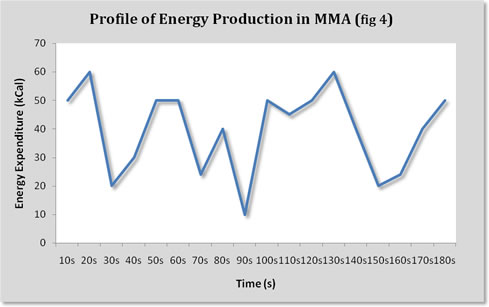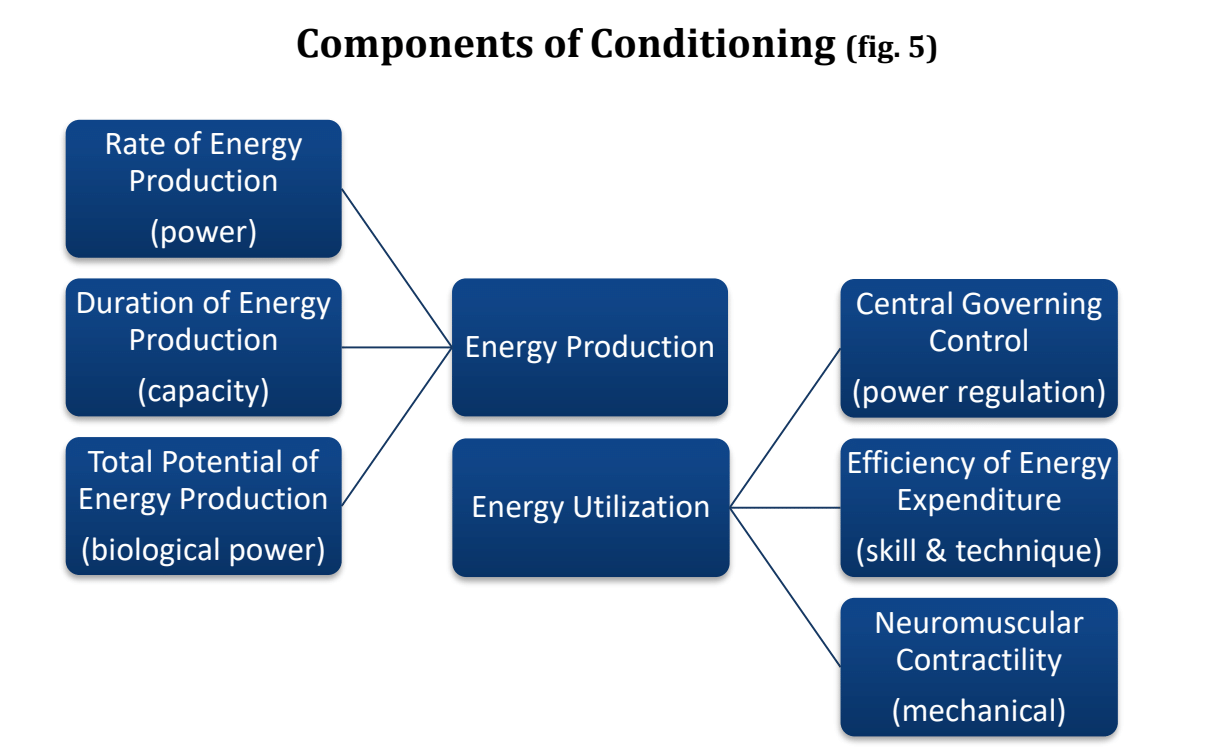An Ultimate MMA Conditioning Preview…..
Before we spend any more time talking about conditioning, it’s important to understand exactly what conditioning is in the first place. Far too often, people use the words “conditioning” or “cardio” without really having a solid understanding or definition of what they actually mean. It’s also common to hear people say that fighters are some of the best conditioned athletes there are. But is this really the case? What is conditioning really?
While I don’t disagree that MMA requires a great deal of cardiovascular development and muscular endurance, among other things, the reality is that conditioning is a measure of how well an athlete is able to meet the energy production demands of their sport. A football player who is able to generate tremendous power for 10-12 seconds each play over the course of an entire game is just as well conditioned as a fighter who can last all five rounds of championship fight, for example. Conditioning is about much more than just “cardio.”
Each sport requires a different combination of power (the ability to produce energy rapidly) and endurance (the ability to produce energy for a long period of time). Some sports require a great deal of power and low to moderate endurance while others require the exact opposite. Most sports, however, tend to fall somewhere in between. MMA is a brutal and mentally challenging sport in many ways because it demands a combination of high power and relatively high endurance at the same time. As I said in the introduction, there may be many sports that require more power and many that demand greater endurance, but very few that simultaneously require both in such an unpredictable and unforgiving fashion.

Fundamentals of Conditioning
If you look at the graph in fig 4 above it’s easy to get a visual representation of what conditioning really is. On the vertical axis you have energy expenditure, measured in calories (a unit of heat energy) and on the horizontal axis you have time in seconds. The sudden changes you can see from the spikes represent drastic changes in activity level and power output such as when you go from a flurry of explosive punches and kicks to backing out and throwing some light jabs or circling. In MMA these sudden changes are commonplace and can be seen throughout pretty much every fight.
In order to use all your MMA skills through a 2-5 round fight you have to produce power in a similar profile to that seen in the graph. At certain periods in the fight you need higher power output as you throw a brutal combination of strikes, go for or defend takedowns and submissions, etc. At other times you don’t need as much energy because you’re just circling or using footwork, waiting to improve position, throwing jabs for range, etc.
What all this means is that conditioning essentially comes down to how well the systems of your body are able to create the energy your muscles need to perform these skills throughout a fight. If the systems involved in energy production can generate ATP (the fuel your muscles run on) fast enough and for long enough then you have good conditioning, but if they can’t….well then you gas out. It’s also worth noting that while the cardiovascular system is a very important piece of this puzzle, it’s not the only piece and conditioning is not adequately described when it’s used interchangeably with the term “cardio.”

You can see in fig. 5 that there are six primary components that determine your conditioning level and how well your body can produce the energy necessary throughout a fight. These are the six components of energy system production that determine the difference between gassing out quick and being able to outpacing your opponent from bell to bell. Understanding this fundamental principle and how these six pieces fit together is very important and will give you a whole new perspective on how to develop your conditioning from the inside out.
To learn how you can take your conditioning to the next level by developing each of the our components of conditioning, pick up your copy of “Ultimate MMA Conditioning” now!
